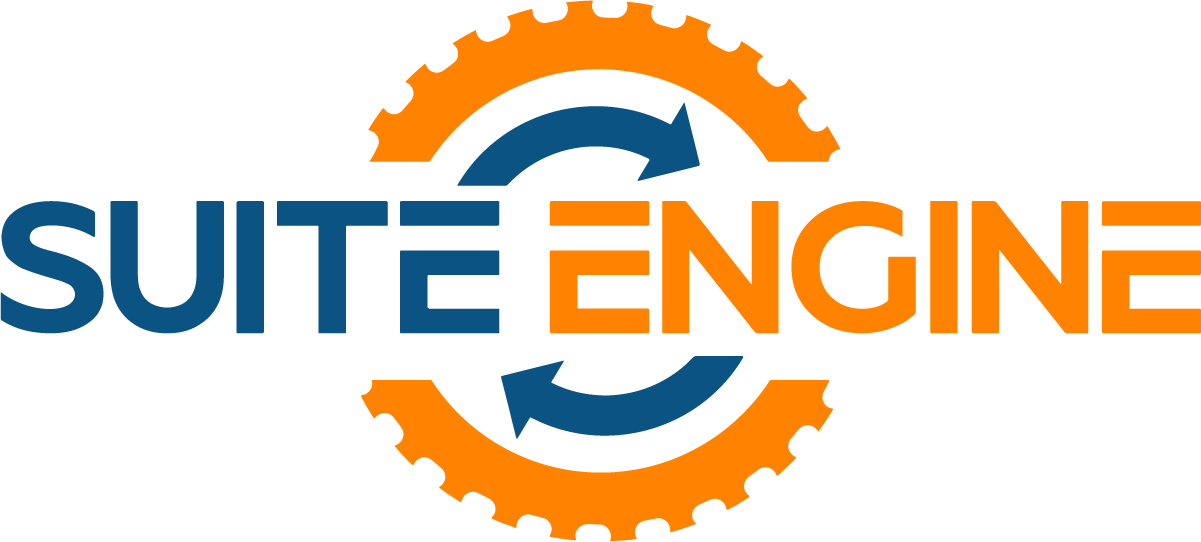Successful Equipment DMS Implementations
What To Know
Are you implementing a new Dealer Management System (DMS)? Are you about to embark on a brand new project? Or perhaps a project just fell into your lap? Implementing a new Equipment DMS can be a complex process. Still, with proper planning and execution, it can lead to a more productive way of managing and growing your heavy equipment dealership.
Successful DMS Implementations don’t happen by chance, so here are nine essential things that will ensure a smooth transition from each step of the process – before, during, and after – to successfully implement a new DMS.
Create a Team for Equipment DMS Implementation Success
The success of every Equipment DMS implementation project relies on having the key people involved from the get-go, especially when it comes to implementing an Equipment DMS system, as it’s the heart of the dealership operation.
Additionally, it is essential to note that this software will produce results equivalent to the effort put into its usage. Suppose people are not excited about the new software and are not trying to use it to its full potential. In that case, the organization will embark on a massive project yielding zero results.
Given this, we understand that gathering the right team to lead this initiative is crucial. Based on thousands of implementations, we advise picking a team with different roles and seniority levels throughout the dealership. Of course, this includes having the President or C-Level users in the organization as part of the team, as this is a crucial element. Still, we also recommend bringing people from every department – some who have been around for a while and others who have just joined the organization.
If you can include people from different locations, that would be great. Having people that are only from Headquarters won’t give you the most realistic perspective on the actual needs of the entire organization. Depending on the size of your organization, a team between three to six people is fine. If you want a more significant representation from everyone in the dealership, you can create committees for specific tasks led by one implementation team member. By having these committees, you get feedback from more people, still, keep a small team, and all information stays within the team.
A diverse team that can bring ideas based on their role in the organization and their responsibilities to the customers and suppliers will help you make decisions that benefit the dealership and not just a few people. Once the team is defined, it’s also essential to define roles and responsibilities for each team member.
Define Your Needs and Goals
Hold the curiosity to start evaluating all the features from all the Equipment DMS available in the marketplace, and first invest time looking inward. Outline your current needs and define your future goals. The classic paper and pen method of writing down our thoughts can work wonders in this stage.
We recommend that each team member write down two lists individually to share with the team later.
- List #1 is about writing down what you need to solve with an Equipment DMS. Think about your challenges, repetitive processes, and time-intensive tasks. Contemplate what areas of your business are behind or lacking the resources to overcome the competition. Consider what the customers say they would like to see improve and what they like! Implementing a new DMS is a big task, so fixing what is not broken is unnecessary. If something works well for everyone – especially your customers, you don’t want to change it with a new DMS!
- List #2 is about writing down what you would like to achieve in the future with a DMS, so these are things that you don’t currently do or have. Still, you want to incorporate to streamline processes, keep up with growth and provide a better experience for your team and customers.
Reviewing your lists with the team will lead to discovering repeated patterns and new concepts. While going through this process, assign a priority level and potential ROI to each item. Categorizing the items on the lists will provide insight into identifying tasks that require immediate attention but may not be critical to achieving sustainable growth or significant ROI. Visualizing these numbers on paper will help you prioritize the list and transform your wishlist into an actionable list.
[Example Images]

Select the Right DMS
Once you’ve identified your needs and goals, it’s time to select a DMS that can support them. Consider factors such as functionality, scalability, support, and how they fit your needs and goals.
Our recent blog post addresses the four questions to ask when evaluating a dealer management system that can help you determine the best system to meet your organization’s goals. In addition to these, another essential item to cover in this step is price.
Budgeting and Pricing
One of the biggest obstacles is understanding the pricing structure and budgeting for the various components required for a successful DMS implementation, such as software, implementation, consulting, and training fees.
DMS software can vary in price depending on the features and functionality required. Generally, Software subscription fees can start at $100 a month to tens of thousands of dollars a month. It’s important to note that the most expensive option may not always fit your dealership’s needs. Be sure to evaluate the features and benefits of each option to determine which will provide the most value.
Next, let’s discuss budgeting for implementation, consulting, and training. Implementation costs can vary depending on the complexity of your dealership’s processes and the customization required for the DMS software. Consulting costs can also vary depending on the level of support required. Expect to pay $200 to $350 per hour for consulting services. Training costs will depend on the number of employees that need to be trained and the level of training required.
Implementing a DMS can be a complex and expensive undertaking. However, it is critical to understand the pricing structure and your budget, not only for the software’s product subscription price but also for implementation, consulting, and training. Always remember your dealership can reap the benefits of increased efficiency, improved inventory management, and improved customer satisfaction.
If you are considering implementing a DMS, contact us to learn how our solution can benefit your dealership.
Once you select the right partner, the partner will address steps such as defining the scope of work, timeline, and milestones. These steps will be more manageable for you to decide if you have a precise alignment in the previous two steps because if everyone is on the same page, starting a project with the software vendor will be smoother.
Develop an Implementation Communication Plan
A comprehensive communication plan is critical to ensure the DMS is rolled out smoothly and effectively. This plan should include roles and responsibilities, timelines, and milestones.
Keeping open communication with everyone involved during this process – your software vendor and everyone in the organization – sets the tone for the entire implementation process.
When people are aware of these important processes, they are more willing to work with you to help solve roadblocks and even help you prepare for the next phase so that things get done quicker and more smoothly.
Implementing a DMS shouldn’t be a task to complete just by the software vendor or the very few involved in the project. A DMS is the heart of a dealership’s operations, touching key organizational processes; therefore, everyone should be informed of what happens.
Connect the Dots
This one usually appears to be a more daunting step because it concerns data preparation. Some people advise doing this step before implementing a DMS, but we recommend doing it while implementing it.
We know it’s essential to ensure your data is accurate and complete; however, having 100% accurate and complete data is never a one-done deal. Whether you’re a one-location dealership or a multiple-location dealership growing with mergers and acquisitions, data management is always a work-in-progress project because data changes and evolves as your business changes and evolves.
By paying attention to your data during the implementation of a DMS, you can improve the quality of your data faster because you will have complete visibility into the data through dashboards and reports.
It’s hard to pinpoint what’s good and bad from your data when it’s sitting in endless columns and rows in a spreadsheet. Having our data in the form of reports and dashboards is ideal because you can easily see what needs to be revised, what it’s missing, and what is looking good.
Connecting the dots is a key step in the implementation process of your DMS that shouldn’t be tackled first or as a stand-alone step because it’s a work-in-progress project. Investing time into validating the data is critical so that everyone in your organization trusts the numbers, securing a high user adoption.
Train Your Team on the DMS
Studies show that approximately 80% of product features are rarely or never utilized. However, providing comprehensive training and communicating to your staff that they have access to resources to learn and feel at ease using the new DMS will guarantee they are proficient with the system.
Training your staff on the DMS and any new or revised business processes is critical. We recommend incorporating onboarding training during the DMS implementation process to ensure optimal user adoption.
Additionally, it’s essential to conduct training sessions once every phase of the DMS is introduced. Consider scheduling refreshers or inspiration sessions every quarter or as needed based on your organization’s roles to maintain high user adoption.
Monitor Progress
Once the DMS is implemented, start monitoring progress and making adjustments as required. This involves communicating with all members of the organization to determine if they are utilizing the system, identifying any obstacles they may be facing, and receiving feedback about what they do or do not like about the system. Additionally, setting and tracking Key Performance Indicators (KPIs) and evaluating improvements over time can help you determine the overall success of the DMS implementation.
If you’re getting questions and feedback, it is because people are using the DMS, which is fantastic! The ultimate achievement is when more complex projects are requested, indicating that people are experiencing the benefits and are eager to seek new opportunities.
Evaluate the ROI
Evaluate the new DMS’s return on investment (ROI) to determine its impact on your dealership’s profitability and efficiency. Just as we recommend rolling out the DMS in phases, we recommend evaluating your ROI in phases too.
When the implementation is done, a quick check should be if you completed the project on budget or very close to the initial budget. That’s a great way to start.
Also, remember the list of needs and goals we recommend doing before implementing your DMS? This is an easy way to evaluate ROI because if you cross reference your list of needs and goals versus what you accomplish with the new DMS, you can easily evaluate the ROI.
The next phase should be the gray dollars analysis, which are the indirect benefits of using the DMS, such as improved customer satisfaction and increased employee productivity. Once everyone in the organization is fully committed to using the DMS, you can do the green dollars analysis, which can be done by answering the question: What revenue has been generated directly by the DMS?
- Improved inventory management?
- Better labor utilization rates?
- Increased income in the rental department by increasing add-on recommendations?
- Faster turnarounds in the service departments?
What else? These are all business processes that contribute to improving the bottom line.
Ready to have a successful DMS Implementation?
We would love it if you consider us as your DMS partner. Schedule a demo today and learn why we have been the DMS of choice for the heavy equipment industry.
SUITE ENGINE | We connect your business with modern software from Microsoft.
Simplified processes. All in one place.
Equipment Management | Production Builders | and more …
Learn more from Suite Engine …
SHARE THIS POST:







